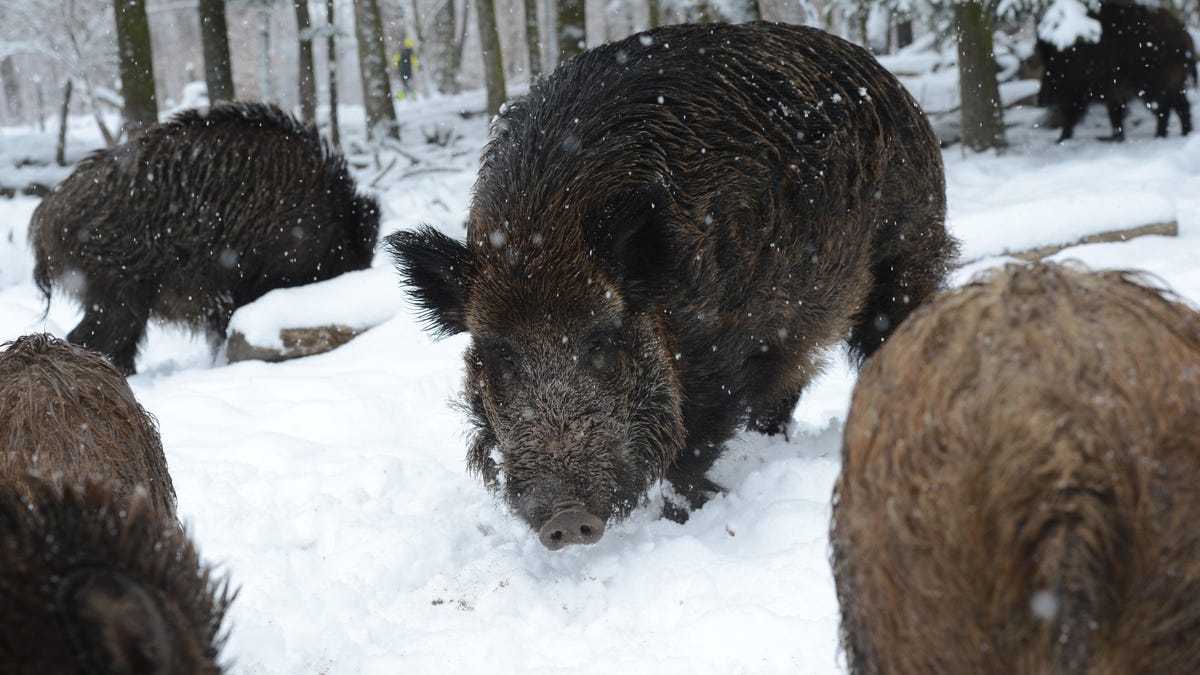
Canada’s wild hogs are apparently poised to invade America’s yard. In new research this month, scientists have found evidence that these invasive wild pigs have a “high potential” to cross over the Canadian border and establish new populations in mostly pig-free parts of the U.S., particularly South Dakota, North Dakota, Montana, and Minnesota.
Despite once being mere fodder for a meme, the threat of feral and wild pigs has become larger over time. These animals have no natural predators in the areas where they’ve invaded, allowing them to quickly grow in numbers and voraciously consume a region’s native vegetation and small wildlife or farmed crops. They can also carry a variety of potentially dangerous germs and have been known to attack pets or even humans on occasion.
Advertisement
Feral swine have invaded much of the southern half of the U.S., and are typically a combination of escaped domestic pigs (Sus scrofa domesticus) and Eurasian wild boars (Sus scrofa). But Canada’s pig problem is uniquely terrifying. Hunters deliberately brought over wild boars to the area as livestock and controlled game during the 1980s and 1990s, but some were able to escape or were released and then mated with domestic pigs. The net result is that Canada’s wild pigs today tend to be larger and more resistant to cold than those down south, with scientists often referring to them as “super” pigs. Their size and hardiness likely also means that these pigs can easily expand their range further across North America.
The new research was conducted by scientists from Canada and the U.S., including those working for the United States Department of Agriculture. They collected GPS collar data from Canadian wild pigs—including one particularly hefty pregnant 638-pound sow—and cross-referenced that with known geographical information to create models that estimated what would happen to these swine populations in the near future.
Advertisement
They found that Canada’s wild pigs nowadays tend to favor areas rich in deciduous forest and wetlands, followed by those carrying crops. And given that much of the northern prairies in both countries have plenty of these environments, the team predicts that these pigs have a “high potential” to move into the neighborhood soon enough. Specifically, the researchers argue that the animals will move further into southern Saskatchewan and Manitoba in Canada, and into parts of northeastern Montana, North and South Dakota, and the western parts of Minnesota in the U.S. The team’s findings were published this month in the journal Biological Invasions.
Advertisement
“These pigs have high reproductive rates, are very mobile, and have a high capacity to spread,” study author Ryan Brook, a professor at the University of Saskatchewan who has been tracking the pig problem for over a decade, told Field & Stream, earlier this month. “This study is one of the most important of my career because it highlights the massive risk of wild pigs and how far they can—and likely will—move if something different isn’t done.”
The team’s hope is that by accurately predicting where these hogs will head next, relevant parties can take proactive steps to curtail their spread.
Advertisement
“We went from having a general concern about pigs crossing the U.S./Canada border to having very detailed maps showing where they’re most likely to move and establish populations,” Brooks said. “This can be used to target control efforts.”
Services Marketplace – Listings, Bookings & Reviews